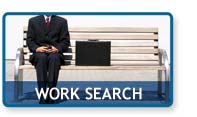Article

I can’t get no…satisfaction
Do you love your work?
Do you speak with passion about what you do?
Are you engaged, challenged, and productive at work?
I am surprised at the number of people I meet who are dissatisfied with their work, their employer, their occupation, their co-workers, their pay, or their commute time. When I hear people speak disparagingly about any of these, as a Career and Employment Specialist, I can’t help but ask what they would rather be doing, and what their ideal work environment would look like. Most often I am met with a shoulder shrug. Some employees believe that it is their employers’ responsibility to make, and keep them, happy. Employers certainly have a role to play in employee satisfaction and engagement but ultimately your happiness and satisfaction as an employee is your responsibility.
You have undoubtedly heard about, and even experienced, the concept of “fit” in the workplace. Perhaps you have had a job that was a great fit for your interests, values, skills, experience, and education or have left a position because it wasn’t a good fit. It is often the case that job seekers don’t get jobs, and that employees are let go, because of issues around fit. What would make a position, occupation, employer, or industry a good fit for you? Are you able to define your dream job? Can you describe the best fit work environment for you? Do you know how much you want to be earning and what kinds of perks you would like to be receiving? Are you able to describe what it is about your current situation that is most dissatisfying? What would make your current situation better?
Do you remember your first job? Do you remember how you decided where you would apply for work and what types of positions you would apply for? Hours of work, rate of pay, work duties of interest, and accessibility were likely considerations. The same considerations have likely applied for subsequent jobs as well but with additional considerations given your stage of life, commitments and responsibilities, and education, experience, and skills. Perhaps out of necessity, or opportunity, you have applied for or accepted employment without taking stock of or evaluating the fit.
What happens when you are in a position, or working for an employer or in an industry, that isn’t a good fit? Dissatisfied and disengaged employees have an impact on the overall success of the organizations they work for. Common outcomes of employee dissatisfaction include lower productivity, dysfunctional work relationships, and difficulty or unwillingness to support team and organizational goals. When dissatisfied and disengaged employees remain in their positions and continue to work for their organizations they are a detriment to themselves and their organizations. Workplace accidents, illnesses, and absenteeism are visible results but presenteeism is also a concern. Presenteeism describes situations in which employees come to work even though they are ill or injured and can result in suboptimal performance, damaged relationships, and absenteeism of other employees.
If you are not satisfied in your current role, or with your organization, what can you do? Happy employees are productive and efficient employees. Satisfied and engaged employees are also likely to be happier and more satisfied in other areas of their lives. Would you rather be excited to get up and go to a job that you feel good about, with people that you enjoy working with, in an environment that suits your personality and supports your best work, or dread going to work every day? I can’t imagine that the later is the case! Satisfied employees are willing to go above and beyond, are more productive, have better working relationships, and are often offered more opportunities.
The following 5 tips can help you get more satisfaction in your current job:
- Talk to your employer about the areas of your work that you are less than satisfied with and offer suggestions for increasing your satisfaction; your suggestions may also improve the satisfaction of other workers, enhance productivity and efficiency, or improve customer service.
- Get involved with special projects or committees; if you are feeling bored or underutilized participating in extra activities may be just the boost you need.
- Take initiative; become a mentor, start a team activity, tackle a project that has been on the back burner, or register for a course – do something that you enjoy and that contributes to the team or organization, and gets you active.
- Take note of what activities you most enjoy and the amount of time you spend doing those activities during the day. Do the same for those activities you least enjoy. Perhaps a different position or different allocation of work activities will alleviate some of your dissatisfaction.
- Talk to people in different positions within the organization about the work they do; become your own career manager and investigate opportunities that excite and invigorate you.
Career Designs for Life has a variety of assessment tools including Strong Interest Inventory ®, Myers-Briggs Type Indicator ®, and Personality Dimensions ® that can help you to identify your best fit work environment and work activities.
For a FREE 30 minute consultation please feel free to contact Paula directly at paula@careerdesignsforlife.com or 780.589.2245.


